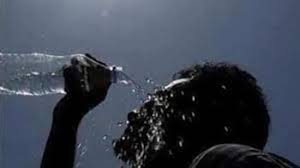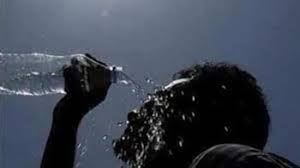
Introduction
Table of Contents
EXTREMECLIMATE Heatwaves are becoming increasingly common and severe due to climate change, and their impacts are felt disproportionately across different regions and socio-economic groups. While wealthier countries have the resources to mitigate and adapt to rising temperatures, poorer countries often struggle, leading to severe health consequences, including thousands of unreported deaths.
The Reality of Heat Inequality
Heat inequality refers to the uneven distribution of the impacts of extreme heat, with the most vulnerable populations suffering the most. This inequality is starkly evident in poor countries where infrastructure, healthcare, and social services are inadequate to cope with the rising temperatures.
Lack of Infrastructure
EXTREMECLIMATE In many poor countries, homes and workplaces lack basic cooling mechanisms such as fans or air conditioning. Urban areas often suffer from the urban heat island effect, where concrete and asphalt absorb and retain heat, exacerbating the situation. In rural areas, the lack of access to electricity further limits the use of cooling devices.
Healthcare Limitations
EXTREMECLIMATE Healthcare systems in poorer countries are often underfunded and understaffed. During heatwaves, hospitals and clinics can become overwhelmed with patients suffering from heat-related illnesses such as heatstroke, dehydration, and exacerbated chronic conditions. The lack of adequate healthcare infrastructure means many of these cases go untreated, leading to unreported deaths.
The Invisible Toll
Underreporting of Deaths
EXTREMECLIMATE Many heat-related deaths in poor countries go unreported due to several factors. Firstly, there is a lack of reliable data collection systems. Many deaths occur in rural or remote areas where death certificates are not issued, and cause of death is not officially recorded. Secondly, there is often a lack of awareness among healthcare providers and the public about the dangers of heat and how to recognize heat-related illnesses.
Vulnerable Populations
The most vulnerable populations include the elderly, children, and those with pre-existing health conditions. Additionally, outdoor workers, such as farmers and construction workers, are at a higher risk due to prolonged exposure to high temperatures. Women, who often bear the brunt of household chores and caregiving, also face increased risks.
Case Studies
India
EXTREMECLIMATE The country recorded over 6,000 heat-related deaths between 2010 and 2018. However, experts believe the actual number is much higher. In rural areas, many deaths are not recorded, and the true extent of the impact remains unknown.
Sub-Saharan Africa
In sub-Saharan Africa, the combination of high temperatures and limited access to healthcare creates a deadly situation. In countries like Nigeria and Sudan, many deaths attributed to “natural causes” are actually heat-related. The lack of reliable data means these deaths are not included in official statistics, hiding the true impact of heatwaves on the population.
Mitigation and Adaptation Strategies
Improving Infrastructure
EXTREMECLIMATE Investing in infrastructure is crucial to mitigate the effects of heatwaves. This includes building homes with better ventilation, providing access to electricity for cooling devices, and creating green spaces in urban areas to reduce the urban heat island effect.
Strengthening Healthcare Systems
Healthcare systems need to be strengthened to handle the increased demand during heatwaves. This includes training healthcare providers to recognize and treat heat-related illnesses, ensuring hospitals and clinics are adequately equipped, and improving data collection systems to accurately record heat-related deaths.
Public Awareness Campaigns
EXTREMECLIMATE Raising public awareness about the dangers of extreme heat and how to protect oneself is crucial. This can be achieved through community outreach programs, educational campaigns, and collaboration with local organizations.
The Role of Global Cooperation
Addressing heat inequality requires global cooperation. Wealthier countries and international organizations must support poorer countries in building resilience to extreme heat. This can be done through financial aid, technology transfer, and sharing best practices for mitigating and adapting to heatwaves.
Financial Aid

Financial aid can help poorer countries invest in necessary infrastructure and healthcare improvements. This can include funding for building resilient homes, providing access to cooling devices, and strengthening healthcare systems.
Technology Transfer
Wealthier countries can share technology and innovations that help mitigate the effects of extreme heat. This can include energy-efficient cooling systems, heat-resistant building materials, and early warning systems for heatwaves.
Sharing Best Practices
International cooperation can also involve sharing best practices for dealing with heatwaves. This can include lessons learned from successful public awareness campaigns, effective healthcare strategies, and innovative infrastructure solutions.
Conclusion
EXTREMECLIMATE Heat inequality is a pressing issue that requires urgent attention. Thousands of unreported deaths in poor countries are a stark reminder of the disproportionate impact of climate change on vulnerable populations. By improving infrastructure, strengthening healthcare systems, raising public awareness, and fostering global cooperation, we can address this silent killer and ensure that everyone has the means to protect themselves from extreme heat.









